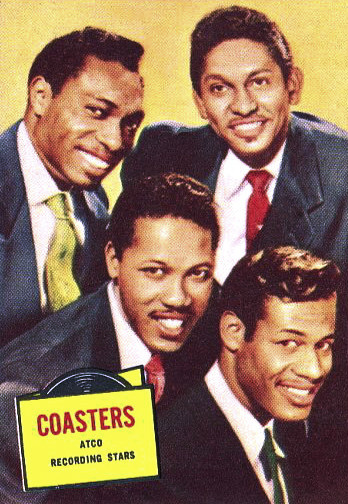Few songs capture the humor, rebellion, and style of 1950s rock ‘n’ roll quite like “Yakety Yak” by The Coasters. Released in 1958, this catchy, humorous tune is more than just a pop hit—it’s a cultural commentary that has echoed through generations. Penned by the legendary songwriting duo Jerry Leiber and Mike Stoller, “Yakety Yak” became an instant sensation, topping the Billboard R&B charts and soaring to #1 on the pop charts. It’s a song about the playful tug-of-war between teenagers and parents, wrapped in infectious saxophone riffs and witty, relatable lyrics.
The Coasters were true pioneers of a new sound, merging rhythm and blues with rock ‘n’ roll and theatrical storytelling—a fresh and bold approach in 1955. Known for hits like “Charlie Brown” and “Poison Ivy,” their music mirrored the rebellious spirit and newfound independence of young people. As Leiber noted, their songs “spoke directly to teenagers’ lives, their frustrations, and humor”—and “Yakety Yak” stands as perhaps their most famous example.
The creation of “Yakety Yak” was inspired by the rise of the American teenager as a culturally distinct force in the late 1950s. It illustrates a teenager’s grumbling yet reluctant obedience to never-ending chores imposed by parents. Each demand met with the exasperated retort, “Yakety yak! Don’t talk back!” captures a universal feeling shared across decades. One Coasters member reflected, “The song is a playful snapshot of what’s between parents and teens—we’ve all been there.”
What makes this song so electrifying is its blend of humor and rebellion. Far from outright insubordination, the lyrics paint a comedic picture of everyday family conflict, elevated by The Coasters’ spirited vocal performances. Their voices perfectly embody the teenage eye-rolls and muttered complaints beneath a bouncy, upbeat rhythm—making the song a timeless dialogue between generations.
An explosive feature that cannot be ignored is the powerful saxophone riff by King Curtis. More than just background music, the saxophone voices the teenager’s inner rebellion with sharp, edgy tones that grab listeners and keep feet tapping. This iconic riff inspired later instrumental hits, including the famous “Yakety Sax,” becoming synonymous with comedic chase scenes worldwide.
The astonishing success of “Yakety Yak” was no accident. It struck a cultural chord across ages, allowing teenagers to laugh at their plight while giving parents a humorous window into their children’s world. As Mike Stoller once said, “We caught lightning in a bottle—our music spoke for a moment that was both personal and broadly universal.”
Since then, “Yakety Yak” has cemented its place as more than just a chart-topping hit; it’s a symbol of youthful spirit and humorous resistance. From films to TV shows and commercials, the song evokes the carefree 1950s rock ‘n’ roll era and the birth of teenage independence. Its lyrics and catchphrases continue to resonate, reminding us of a simpler yet poignant time.
In today’s fast-paced changing world, with rebellion manifesting in myriad new forms and rock evolving vastly, “Yakety Yak” remains a beloved anthem defending the roots of rock ‘n’ roll and teenage universality. It invites all generations to nod along to the saxophone’s call, reliving a moment when music became the voice of an emerging youth culture—a rebellion wrapped in humor, rhythm, and unforgettable flair.
